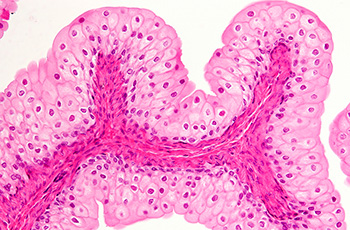Study demonstrates that several species of bacteria can work their way inside the human bladder’s surface area

A study, published in the Journal of Molecular Biology, demonstrates that several species of bacteria can work their way inside the human bladder’s surface area.
The University of Texas Southwestern (UTSW) team, which included researchers from Molecular Biology, Pathology, Urology, and Biochemistry, examined bacteria in bladder biopsies from 14 recurrent urinary tract infection (RUTI) patients using targeted fluorescent markers, a technique that had not been used to look for bacteria in human bladder tissue.
“Recurrent UTI (RUTI) reduces quality of life, places a significant burden on the health care system, and contributes to antimicrobial resistance,” said Dr. Kim Orth, Professor of Molecular Biology and Biochemistry at (UTSW) and senior author of the study.
“The bacteria we observed are able to infiltrate deep into the bladder wall tissue, even past the urothelium layer,” said first and co-corresponding author Dr. Nicole De Nisco, an Assistant Professor of Biological Sciences at University Texas (UT) Dallas who initiated this research as a postdoctoral fellow in Dr. Orth’s lab. “We also found that the adaptive immune response is quite active in human RUTIs.”
The latest findings build on decades of clinical UTI discoveries by Dr. Zimmern Professor of Urology and a co-senior author, who suggested the collaboration to Dr. Orth, along with other UT System colleagues.
